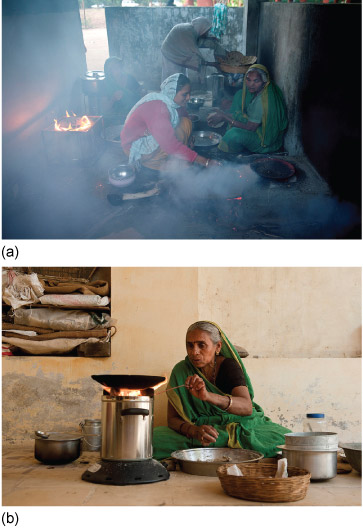4.2 Real world trials in CDR
Bioenergy and CCS are usually used separately in industry, rather than as a closed BECCS system like the Illinois Industrial CCS Project. Biomass is, of course, humanity’s original source of energy for cooking and heating – by direct combustion of fuel wood, charcoal and dried dung (Figure 9) – and still is for one-third of the world’s population (International Energy Agency, 2007).
Vegetable and animal oils can be used directly as biodiesel; fermentation of crops produces bioethanol (i.e. alcohol); and anaerobic decomposition of plants or animals produces methane and other biogases. Using this information, match the following biomass sources to the type of biofuel they provide.
Biofuels and waste were estimated to provide 12% of the world’s total fuel consumption in 2013, little changed from the 1973 estimate of 13% (International Energy Agency, 2015).
CCS, on the other hand, is still a relatively young technology. By 2019 there were 17 operating CCS projects around the world, and 31.5 million tonnes of CO2 per year is being captured – 3.7 million tonnes of this is stored in geological formations.


